Optimal Resource Allocation for CDMA Networks Based on
advertisement
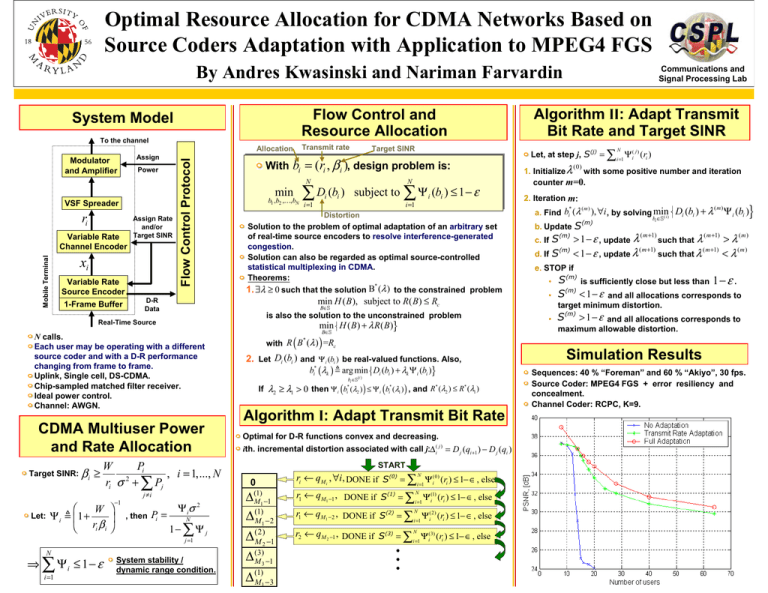
Optimal Resource Allocation for CDMA Networks Based on
Source Coders Adaptation with Application to MPEG4 FGS
Communications and
Signal Processing Lab
By Andres Kwasinski and Nariman Farvardin
Flow Control and
Resource Allocation
System Model
To the channel
Transmit rate
Allocation
Modulator
and Amplifier
Power
VSF Spreader
ri
Mobile Terminal
Variable Rate
Channel Encoder
Assign Rate
and/or
Target SINR
xi
Variable Rate
Source Encoder
1-Frame Buffer
min
b1 ,b2 ,…,bN
Let:
Ψi
B∈S
j ≠i
, then
Pi =
Ψ iσ
2
N
1− ∑ Ψ j
j =1
N
⇒ ∑ Ψi ≤ 1 − ε
i =1
i =1
is also the solution to the unconstrained problem
Pi
W
, i = 1,..., N
2
ri σ + ∑ Pj
⎛
W ⎞
⎜1 +
⎟
⎝ ri β i ⎠
i =1
min H ( B), subject to R ( B ) ≤ Rc
D-R
Data
CDMA Multiuser Power
and Rate Allocation
−1
N
∑ Di (bi ) subject to ∑ Ψ i (bi ) ≤ 1 − ε
Solution to the problem of optimal adaptation of an arbitrary set
of real-time source encoders to resolve interference-generated
congestion.
Solution can also be regarded as optimal source-controlled
statistical multiplexing in CDMA.
Theorems:
*
1. ∃λ ≥ 0 such that the solution B (λ ) to the constrained problem
N calls.
Each user may be operating with a different
source coder and with a D-R performance
changing from frame to frame.
Uplink, Single cell, DS-CDMA.
Chip-sampled matched filter receiver.
Ideal power control.
Channel: AWGN.
≥
N
Distortion
Real-Time Source
Target SINR: β i
Target SINR
With bi = (ri , β i ), design problem is:
Flow Control Protocol
Assign
System stability /
dynamic range condition.
(
min {H ( B) + λ R( B)}
B∈S
)
with R B (λ ) =Rc
*
2. Let Di (bi ) and Ψ i (bi ) be real-valued functions. Also,
bi* (λk ) arg min {Di (bi ) + λk Ψ i (bi )}
bi ∈S( )
i
If
λ2 ≥ λ1 > 0 then Ψ i (bi* (λ2 ) ) ≤ Ψ i (bi* (λ1 ) ) , and R* (λ2 ) ≤ R* (λ1 )
Algorithm I: Adapt Transmit Bit Rate
Optimal for D-R functions convex and decreasing.
ith. incremental distortion associated with call j:∆ i( j ) = D j (qi +1 ) − D j ( qi )
START
0
∆ (1)
M1 −1
ri ← qM i , ∀i, DONE if S (0) = ∑ N Ψ i(0) (ri ) ≤ 1− ∈ , else
i =1
r1 ← qM1 −1 , DONE if S (1) = ∑ N Ψ i(1) (ri ) ≤ 1− ∈ , else
i =1
∆ (1)
M1 − 2
r1 ← qM1 − 2 , DONE if S (2) = ∑ N Ψ i(2) (ri ) ≤ 1− ∈ , else
i =1
∆ (2)
M 2 −1
(3)
∆ M 3 −1
r2 ← qM 2 −1 , DONE if S (3) = ∑ N Ψ i(3) (ri ) ≤ 1− ∈ , else
i =1
∆ (1)
M1 − 3
Algorithm II: Adapt Transmit
Bit Rate and Target SINR
Let, at step j, S (j) =
∑
N
i =1
Ψ i( j ) (ri )
1. Initialize λ with some positive number and iteration
counter m=0.
(0)
2. Iteration m:
(m)
b. Update S
(m)
*
{
bi ∈S
( m +1)
> λ (m)
S (m) > 1 − ε , update λ
such that λ
(
m
+
1)
(
m
+
1)
(m)
< λ (m)
< 1 − ε , update λ
d. If S
such that λ
c. If
}
Di (bi ) + λ ( m ) Ψ i (bi )
), ∀i , by solving min
(i )
a. Find bi (λ
( m +1)
e. STOP if
S (m) is sufficiently close but less than 1 − ε .
(m)
< 1 − ε and all allocations corresponds to
• S
•
target minimum distortion.
(m)
> 1 − ε and all allocations corresponds to
• S
maximum allowable distortion.
Simulation Results
Sequences: 40 % “Foreman” and 60 % “Akiyo”, 30 fps.
Source Coder: MPEG4 FGS + error resiliency and
concealment.
Channel Coder: RCPC, K=9.
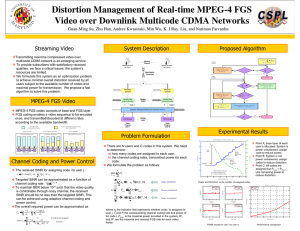
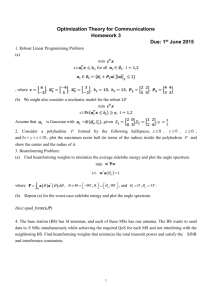


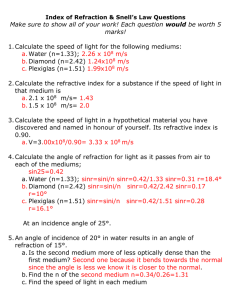
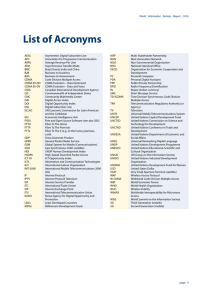
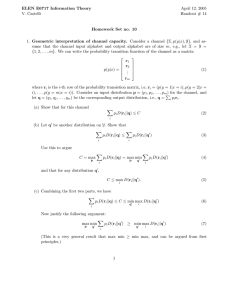
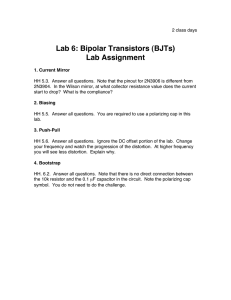
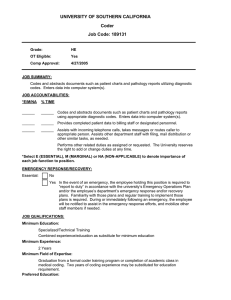
![How performance metrics depend on the [1, 2, 3]](http://s2.studylib.net/store/data/014007089_1-feeb9419c38ad2c0bb54c62f7bed2d80-300x300.png)

